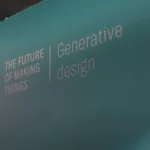A lot of people are unsure about the difference between sketching, wireframing and prototyping. This blog post will help you learn more about each process so that you can decide which one is right for your project!
Table of Contents
Sketch
A sketch is a hand-drawn representation of your site, typically created as part of the design process. Sketches are usually hand drawn images that represent the layout or design structure of a site.

Sketching the interface of the future app is like drawing on a canvas. It’s done by hand with a pencil or pen, and it can be used to both fix an idea as well as maintain your thoughts while you brainstorm for how best to execute that idea.
A good web designer never stops creating sketches for future projects – they’re essential tools that every professional needs when designing interfaces with intricate details by hand. But recently there’s been a shift from analog tools to digital ones: Apps like Adobe Sketch help keep up appearances while making designs both better-looking and more efficient than ever before; all without any messiness.
Sketching an app idea can be as easy and organic of a process as using a napkin with red lipstick. When preparing a sketch, the designer can quickly outline some details of the interface and mark its functionality. But you don’t need to get carried away with drawing out all of those fine lines in your intricate design sketches.
Wireframe
Wireframe is a term used to describe a visual representation of an interface. It is usually composed by hand or through the use of wireframe software, and it often communicates how different content areas on a webpage will be arranged and interconnected with each other.

Wireframes are the blueprint of your website or app. They show how everything will work and what it’ll look like without getting in too deep with graphic design yet. Think about them as a rough sketch before you add color to your painting – that way, when you’re done you can be sure no details were missed!
The team’s focus is on the interaction between screens, not how they look. It can be compared to preparing a construction plan for new building. With an understanding of the content, layouts and design principles behind every screen for your app, you can create a plan that is unique to all aspects. Your team will be able to stick with the timeline during development process by determining where they should locate important elements on each page as well as how different font sizes work together.
Prototype
A prototype is basically a preview version of your site that you show your clients before work begins on building it out in full detail.

Prototyping is essential for resolving usability issues before launch. It can also reveal areas that need improvement, and it’s the only way to get an accurate read on how your users will interact with a product design.
Once you have drafted a prototype of your idea in the hands of real people, all their hidden desires should be made clear- like whether or not they want something interactive enough to keep them engaged as opposed to simply reading through content passively.. You’ll then know when you’ve nailed what needs tweaking!
Sketch vs Wireframe vs Prototype
The difference between sketches, wireframes and prototypes are that sketches give more thought to aesthetics while wireframes and prototypes give more thought to functionality.
- Sketches are usually hand drawn images that represent the layout or design structure of a site.
- Wireframes can also be hand drawn but tend to focus more on functionality than aesthetics.
- prototypes are basically a preview version of your site that you show your clients before work begins on building it out in full detail.



